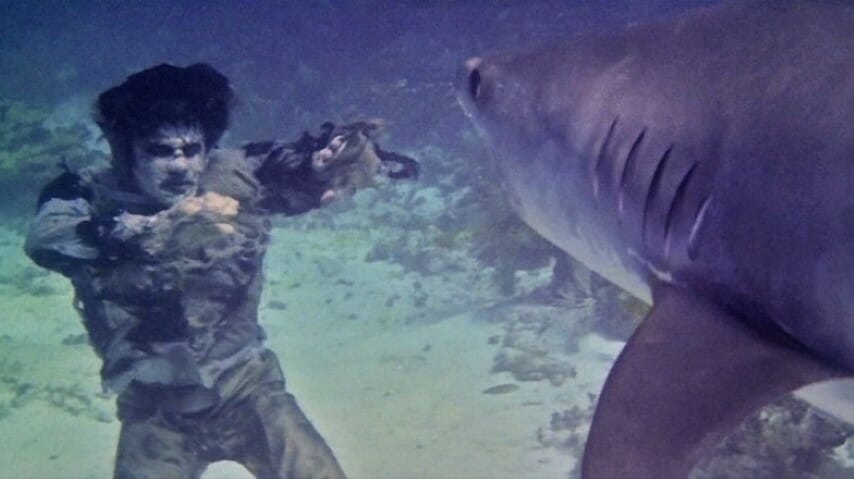
Paste’s ABCs of Horror is a 26-day project that highlights some of our favorite horror films from each letter of the alphabet. The only criteria: The films chosen can’t have been used in last year’s Century of Terror, a 100-day project to choose the best horror film of every year from 1920-2019. With some heavy hitters out of the way, which movies will we choose?
George Romero’s 1968 landmark Night of the Living Dead was a watershed moment for the horror genre, representing a breakthrough for independent film and the cinematic depiction of gore and violence, even as it redefined the shopworn concept of the voodoo “zombie” into something entirely new. It was the kind of film that sent out invisible tendrils of influence throughout the worldwide horror community, first as a “secret handshake” cult classic, and then as the revered godfather of a new genre that bloomed in the 1970s and 1980s. Filmmakers from nearly every country would eventually pay their respects, acknowledging the time they’d spent under Romero’s learning tree … but no other country demonstrated a passion for zombie cinema quite like Italy. If the zombie genre was often disparaged by American film critics as a home to overindulgent violence, sexuality and cinematic depravity, they should have seen what the Italians were working on at the same time.
Those Italian zombie films of the late 1970s and early 1980s—the country’s direct answer to Romero’s iconic first sequel Dawn of the Dead in 1978—form a distinctive sub-genre within the world of zombie fiction, characterized by their extreme violence, often nonsensical plots and frequent theft of whatever elements worked (including entire musical scores) of their American predecessors. To these stolen tropes, the Italians added a tendency toward gratuitous sexuality and electronic musical scores that, coupled with the widespread use of comical English dubbing, often render these films as funny as they are grisly, at least in retrospect. Suffice to say, the likes of Zombi 2 aren’t exactly described as “masterpieces” of atmospheric horror filmmaking, as much as they are fever dreams of sweat and viscera.
Of course, that also makes these films luridly memorable in their own way, as they have a tendency to throw caution (and any sense of proportion) to the wind in the pursuit of full-on grossout spectacle. Directors such as Bruno Mattei, Claudio Fragasso, Michele Soavi, Umberto Lenzi and Pupi Avati all produced films that fit this bill, but no other Italian horror director is so associated with the style as the great Lucio Fulci, who brought us Zombi 2.
The curiously named Zombi 2 was actually meant to be perceived by the Italian market as a direct sequel to Romero’s Dawn of the Dead from a year earlier, which had been released in the country as Zombi. Fulci and writer Dardano Sachhetti, meanwhile, had no real interest in creating a quasi-sequel, and saw their story as more an homage to “classic” zombie stories such as Val Lewton and Jacques Tourneur’s influential I Walked With a Zombie from 1943. What they ultimately created might be construed as the best of both worlds, keeping Romero’s undead ghouls relatively intact but transplanting the action to the same sort of tropical locale that was also becoming a stock trope in the similarly violent Italian cannibal film subgenre that was emerging at the same time.
The story of Zombi 2, such as there is, revolves around a woman and a newspaper reporter who travel to a tropical island where the woman believes her father may be suffering as a victim of a rare disease outbreak. There they find the island in chaos, as a voodoo curse has begun reanimating the dead, and they briefly team up with a doctor and his wife attempting to study or reverse the condition. Deaths and gruesome dismemberment ensue, and really, that’s why you’re watching in the first place.
And in that respect, Fulci definitely brings the goods. Zombi 2 was immediately notorious at the time of release for its brutal violence and horrific imagery, captured iconically in the maggot-covered face of one of the zombies that has frequently been used as a poster or DVD cover for the film in the decades that followed. So too do these zombies kill their victims in particularly nasty ways, the most famous being the death of Greek actress Olga Karlatos, who has her eye slowly impaled upon a splinter of wood in a sequence that can’t help but evoke the eye-slashing gruesomeness of Luis Buñuel’s Un Chien Andalou. It’s the signature bit of violence in a film that has no shortage of it.
The Italian zombie films, though, are ultimately defined by their loose, absurdist feel just as much as they are by their gut-chewing gruesomeness—the product of tiny production budgets, combined with sometimes amateurish performers and a general spirit of “hey, it’s just a movie.” They’re willing to do just about anything to keep the audience engaged, including outlandish stunts to which the likes of Romero would never stoop. Look no further than Zombi 2’s other most iconic moment, in which a man in a zombie costume tussles, underwater, with an actual tiger shark, wrestling it to a standstill. The sheer chutzpah of such an obviously dangerous sequence is the kind of bravado that suffuses this odd spinoff from American zombie films.
So by all means, fling yourself down the rabbit hole of gory Italian zombie cinema, and start with the films of Fulci, including other classics such as The Beyond or City of the Living Dead. Just know that it only gets weirder from there—and by the time you reach the likes of Nightmare City or Hell of the Living Dead, there may be no coming back.
Jim Vorel is a Paste staff writer and resident horror guru. You can follow him on Twitter for more film and TV writing.